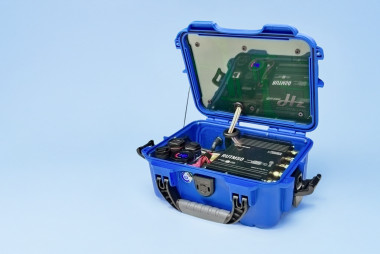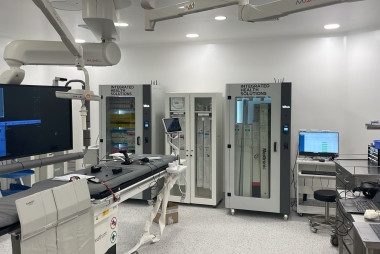Highlights
✔ Out-of-band management is a common method of remotely accessing a network or device. However, OOB solutions are subject to slow connection speeds and high recurring charges.
✔ Deploying the Teltonika Networks RUT956 cellular router allows you to keep your existing legacy infrastructure but make OOB faster and more reliable while reducing costs.
✔ This is thanks to the RUT956 being easy and fast to deploy, its LTE Cat 4 connectivity enhanced by a myriad of network reliability features, and compatibility with RMS.
The challenge – out-of-band management turtles
A common method of remotely accessing a network or device is out-of-band management, also known as OOB. This method relies on using a separate network from the one you wish to access, allowing engineers to remotely monitor and troubleshoot any issues with the local network or the end devices themselves.
Popular forms of OOB include Public Switched Telephone Network (PSTN), analogue Plain Old Telephone Service (POTS) lines, and Integrated Switched Digital Network (ISDN) lines. Using any of these alongside a Cisco ISR device at the remote site would enable incoming calls from the engineer working in their office – no travel costs needed.
These are referred to as legacy connection methods and can be considered as the turtles of the IoT world. Slow and steady wins the race, or in this case, gets the job done. The thing is – we live in a world where getting the job done, and especially winning the race, does not require a sacrifice of speed.
OOB methods such as PSTN, ISDN, or POTS line, in combination with Cisco ISR devices, are subject to slow connection speeds and high monthly recurring charges. In addition, older equipment is simply more vulnerable and therefore less reliable, forcing engineers to rely more heavily on OOB.
Indeed, scrapping the legacy infrastructure and establishing a more cutting-edge remote access solution would be ideal, but ideals are more often than not more costly. Is there a way to keep the existing infrastructure, but make OOB faster and more reliable?
Topology
The solution – speed & reliability with a cellular router
Deploying the Teltonika Networks RUT956 cellular router at the remote site is the perfect way to enhance your remote access solution. This affordable LTE Cat 4 router offers up to 150 Mbps and supports both 3G and 2G technologies in case your legacy solution requires either. This speed is more than enough for fast and streamlined remote access for OOB.
The RUT956 provides not only speed but reliability as well. This industrial cellular router has 2 SIM card slots with auto-failover, backup WAN, and other switching scenarios. This means the device will automatically switch to a backup connection in case the first one is interrupted, maintaining a seamless, uninterrupted connection.
Another strong aspect of this cellular router is how easy and fast it is to deploy. Either side of the RUT956 can be mounted on a DIN rail, and it measures a compact 110 x 50 x 100 mm. The device is compatible with the Teltonika Networks Remote Management System (RMS) for easier and more also comprehensive remote access and management capabilities, including your Cisco ISR’s console interface using RMS Connect.
Last but not least, the RUT956 industrial cellular router is a durable device made to last. Housed in sturdy aluminium casing with plastic panels, it can withstand extreme temperatures from -40 °C to 75 °C. In essence, this means it will perform optimally not matter how hot the server room gets.
Whether your out-of-band management solution relies on PSTN, ISDN, or POTS line, improving its speed and reliability while reducing its costs is a simple task. All it takes is the RUT956 cellular router.
Featured product
RUT9564G LTE (Cat 4), 3G, 2G
With auto failover, backup WAN and other switching scenarios
Ethernet, Serial (RS232, RS485) and multiple Inputs/Outputs
Global Navigation Satellite System for location services and time synchronization










